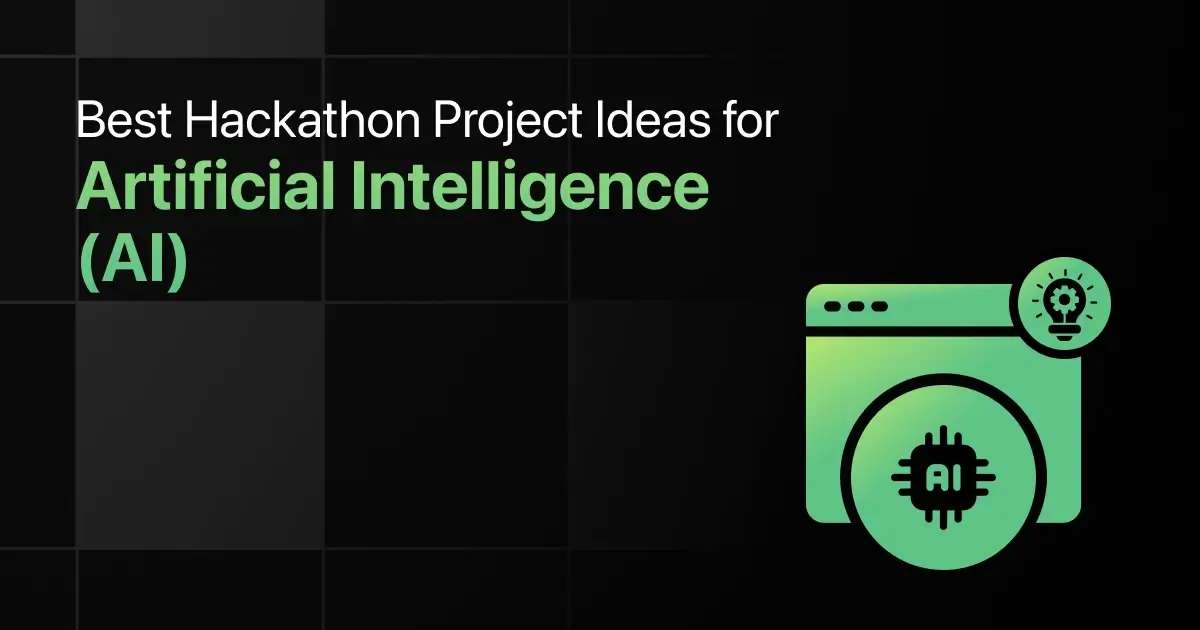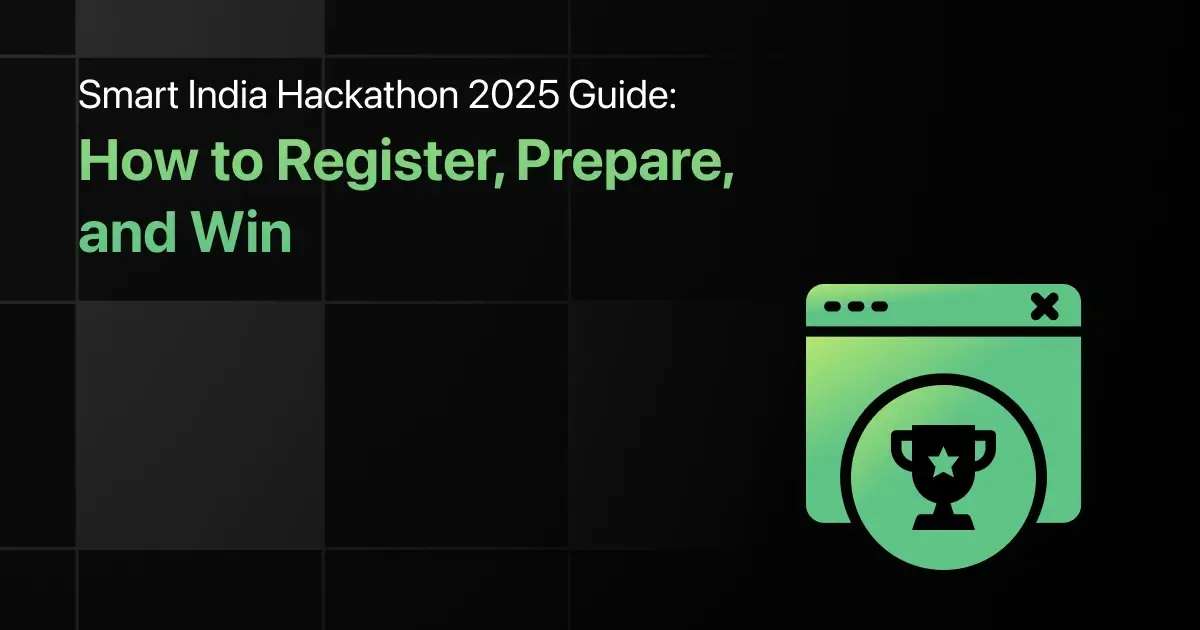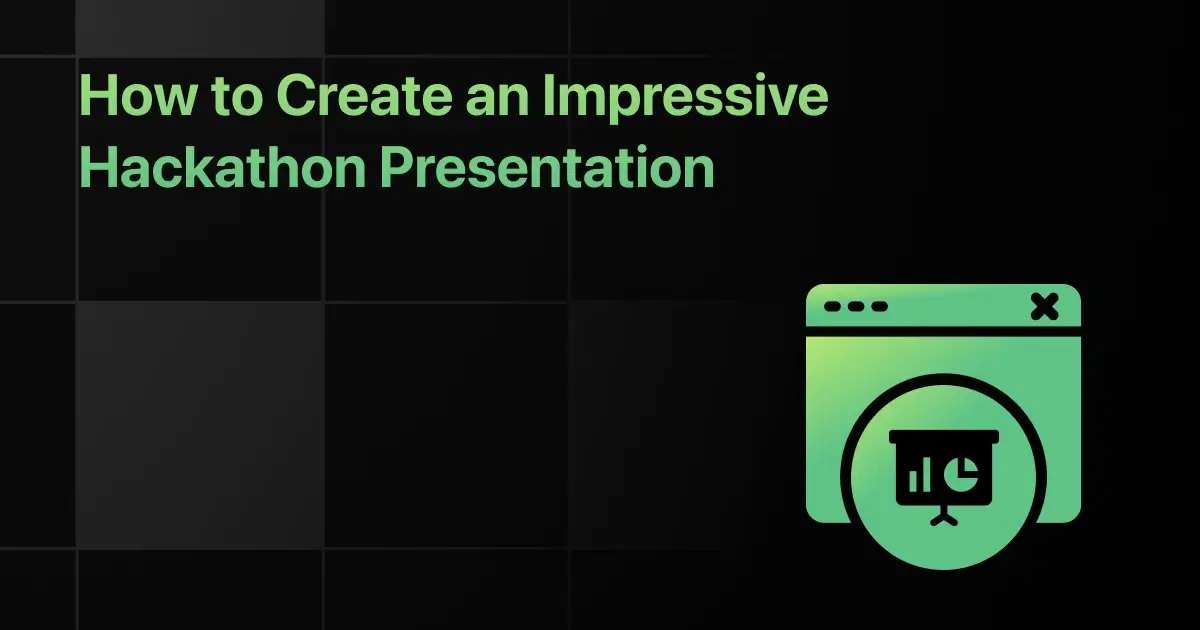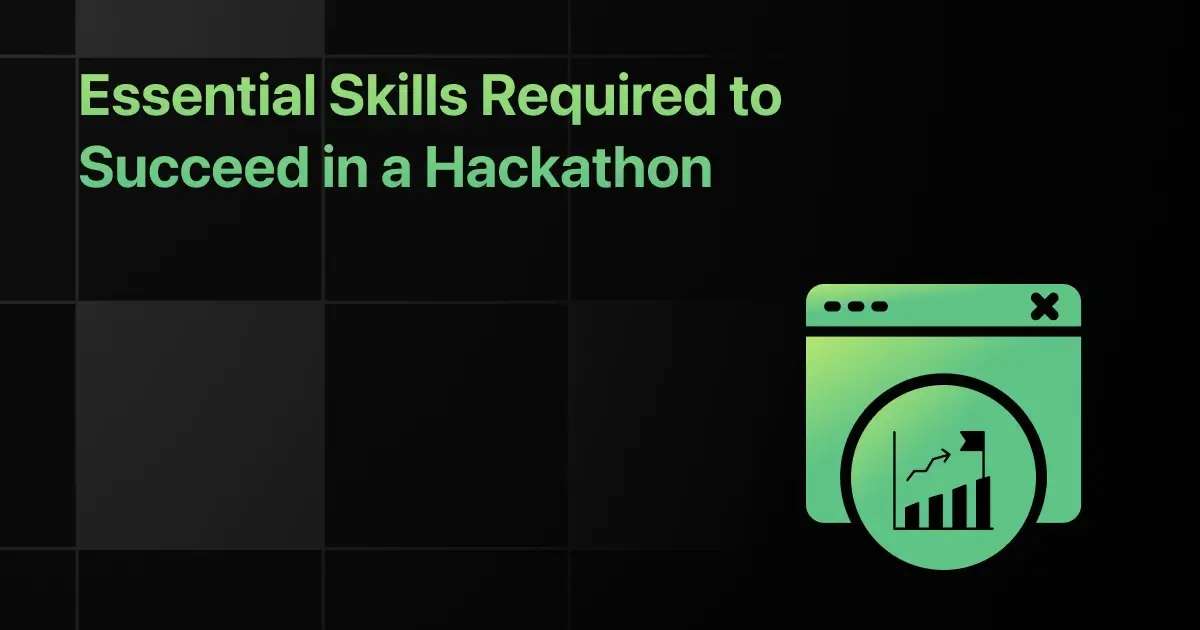Best Hackathon Project Ideas for Artificial Intelligence

Have you ever wondered how AI can be used to solve real-world problems? AI hackathons bring developers and innovators together to create intelligent, data-driven solutions.
From predictive analytics to natural language processing, these events inspire creativity and practical innovation. They also help participants gain hands-on experience in machine learning and automation.
Here are some of the most useful and creative AI hackathon project ideas you can build to make a real impact.
Top AI Hackathon Projects – Overview
Here’s an overview of the 10 best AI hackathon project ideas:
| S.No. | Project Title | Complexity | Estimated Time | Source Code |
|---|---|---|---|---|
| 1 | Handwritten Digit Recognition (MNIST) | Easy | 4–6 hours | Get Started |
| 2 | Image Classification with CIFAR-10 | Easy | 5–7 hours | Get Started |
| 3 | Sentiment Analysis on Movie Reviews | Easy | 6–8 hours | Get Started |
| 4 | Object Detection with YOLO (Pretrained Model) | Easy | 7–9 hours | Get Started |
| 5 | Text Sentiment Classification (IMDB Dataset) | Medium | 6 hours | Get Started |
| 6 | Custom Image Classification with Transfer Learning (MobileNetV2) | Medium | 6 hours | Get Started |
| 7 | Time Series Forecasting with LSTM | Medium | 7 hours | Get Started |
| 8 | DCGAN for Image Generation | Hard | 8 hours | Get Started |
| 9 | BERT Fine-Tuning for Text Classification | Hard | 9 hours | Get Started |
| 10 | Image Caption Generator using CNN-RNN | Hard | 10 hours | Get Started |
Key Focus Areas in AI Hackathons
AI hackathons focus on creating solutions that use data and intelligence to solve real-world challenges. Here are some major areas where participants often innovate:
- Computer Vision: Building models that can identify, detect, or classify images and objects in real time.
- Natural Language Processing: Creating tools that understand, translate, or summarize human language effectively.
- Predictive Analytics: Using data to forecast trends, behaviors, or outcomes in areas like business, health, or finance.
- Generative AI: Designing models that can produce content such as text, music, or images based on given prompts.
- AI for Social Good: Applying AI to improve accessibility, education, healthcare, or sustainability.
- Automation and Optimization: Developing intelligent systems that simplify workflows and enhance efficiency across industries.
10 Best Artificial Intelligence Hackathon Project Ideas
Below are the top 10 artificial intelligence hackathon project ideas for beginners.
1. Handwritten Digit Recognition (MNIST)
This project involves training a neural network to recognize handwritten digits from the MNIST dataset. You will learn how to preprocess image data, design CNN architectures, and optimize deep learning models for classification tasks.
Duration: 4-6 hours
Project Complexity: Easy
Key Concepts Covered:
- Convolutional Neural Networks (CNNs)
- Image Preprocessing & Augmentation
- Model Evaluation Metrics
Implementation Steps:
- Load and preprocess the MNIST dataset.
- Build a CNN model using TensorFlow/Keras.
- Train the model with proper hyperparameters.
- Evaluate accuracy and fine-tune performance.
- Deploy the model for real-time digit recognition.
Required Pre-requisites:
- Python & TensorFlow/Keras basics
- Neural network fundamentals
- Image classification techniques
Resources Required:
- MNIST dataset (available in TensorFlow/Keras)
- Jupyter Notebook or Google Colab
- TensorFlow/Keras and Matplotlib for visualization
Real-World Application:
- Automated check processing in banks
- Assistive technology for visually impaired individuals
2. Image Classification with CIFAR-10
This project involves classifying images into 10 categories using the CIFAR-10 dataset and deep learning models. You will learn about CNN architectures, image feature extraction, and model optimization techniques.
Duration: 5-7 hours
Project Complexity: Easy
Key Concepts Covered:
- Convolutional Neural Networks (CNNs)
- Data Augmentation & Regularization
- Model Training & Evaluation
Implementation Steps:
- Load and preprocess the CIFAR-10 dataset.
- Build a CNN model using TensorFlow/Keras.
- Train the model and optimize hyperparameters.
- Evaluate performance and apply regularization.
- Test the model with new images.
Required Pre-requisites:
- Python & TensorFlow/Keras basics
- Neural network concepts
- Image processing techniques
Resources Required:
- CIFAR-10 dataset (available in TensorFlow/Keras)
- Jupyter Notebook or Google Colab
- TensorFlow/Keras, Matplotlib, and NumPy
Real-World Application:
- Automated object recognition in smart surveillance
- Image-based search engines for e-commerce
3. Sentiment Analysis on Movie Reviews
This is one of the deep learning mini projects which involves analyzing movie reviews to classify them as positive or negative using deep learning models. You will learn about natural language processing (NLP), word embeddings, and sequence modeling with neural networks.
Duration: 6-8 hours
Project Complexity: Easy
Key Concepts Covered:
- Natural Language Processing (NLP)
- Recurrent Neural Networks (RNNs) & LSTMs
- Word Embeddings (Word2Vec, GloVe)
Implementation Steps:
- Load and preprocess the IMDB movie reviews dataset.
- Convert text data into word embeddings.
- Build an RNN or LSTM model using TensorFlow/Keras.
- Train the model and optimize hyperparameters.
- Evaluate accuracy and test with new reviews.
Required Pre-requisites:
- Python & TensorFlow/Keras basics
- Text preprocessing techniques
- Basics of neural networks and NLP
Resources Required:
- IMDB movie reviews dataset (available in TensorFlow/Keras)
- Jupyter Notebook or Google Colab
- TensorFlow/Keras, NLTK, and Matplotlib
Real-World Application:
- Customer feedback analysis for businesses
- Social media sentiment tracking for brand monitoring
4. Object Detection with YOLO (Pretrained Model)
This project focuses on detecting multiple objects in images or videos using the YOLO (You Only Look Once) deep learning model. You will learn about real-time object detection, bounding box predictions, and transfer learning with pretrained models.
Duration: 7-9 hours
Project Complexity: Easy
Key Concepts Covered:
- Convolutional Neural Networks (CNNs)
- YOLO architecture & object detection
- Transfer learning with pretrained models
Implementation Steps:
- Load a pretrained YOLO model (e.g., YOLOv4 or YOLOv5).
- Preprocess input images or video frames.
- Use the model to detect objects and draw bounding boxes.
- Fine-tune the model for better accuracy (optional).
- Test and visualize the results.
Required Pre-requisites:
- Python & TensorFlow/PyTorch basics
- CNN fundamentals & object detection concepts
- OpenCV for image processing
Resources Required:
- Pretrained YOLO model weights (e.g., YOLOv4, YOLOv5)
- Jupyter Notebook or Google Colab
- OpenCV, TensorFlow/PyTorch, NumPy
Real-World Application:
- Autonomous vehicle object detection
- Smart surveillance & security systems
5. Text Sentiment Classification (IMDB Dataset)
This project builds an RNN to classify IMDB movie reviews as positive or negative. You will learn how to process textual data and use embeddings with recurrent networks in TensorFlow.
Duration: 6 hours
Project Complexity: Medium
Key Concepts Covered:
- Embedding Layer
- LSTM/GRU
- Binary Sentiment Prediction
Implementation Steps:
- Load IMDB dataset
- Tokenize and pad sequences
- Build an LSTM-based model
- Train and evaluate
- Visualize accuracy/loss
Required Pre-requisites:
- Text preprocessing
- RNN understanding
- TensorFlow/Keras
Resources Required:
- TensorFlow
- IMDB dataset
- Keras Tokenizer
Real-World Application:
- Customer feedback classification
- Automated review analysis
6. Custom Image Classification with Transfer Learning (MobileNetV2)
This project applies transfer learning using MobileNetV2 to classify a custom image dataset. You will learn how to fine-tune pre-trained models and adapt them to new image classification tasks in TensorFlow.
Duration: 6 hours
Project Complexity: Medium
Key Concepts Covered:
- Transfer Learning
- Feature Extraction
- Model Fine-Tuning
Implementation Steps:
- Load and label a custom dataset
- Import and freeze MobileNetV2 base
- Add and train custom classification head
- Fine-tune selected base layers
- Evaluate and export model
Required Pre-requisites:
- Pretrained model basics
- Image classification
- TensorFlow functional API
Resources Required:
- TensorFlow
- Custom image dataset
- Pretrained MobileNetV2
Real-World Application:
- Specialized product recognition
- Wildlife or medical image classification
7. Time Series Forecasting with LSTM
This project builds an LSTM-based model to forecast values in a time series dataset.
You will learn how to handle temporal sequences and build predictive models using recurrent networks in TensorFlow.
Duration: 7 hours
Project Complexity: Medium
Key Concepts Covered:
- Sequence Modeling
- LSTM Networks
- Sliding Window Technique
Implementation Steps:
- Preprocess time series data
- Define sliding windows
- Build and train LSTM model
- Forecast and visualize results
- Tune hyperparameters
Required Pre-requisites:
- Time series understanding
- LSTM/RNN basics
- TensorFlow sequential API
Resources Required:
- TensorFlow
- CSV-based time series dataset
- Matplotlib/Seaborn
Real-World Application:
- Stock price prediction
- IoT sensor trend forecasting
8. DCGAN for Image Generation
This project trains a Deep Convolutional GAN to generate realistic-looking images.
You will learn how to build and train generative adversarial networks using convolutional layers in TensorFlow.
Duration: 8 hours
Project Complexity: Hard
Key Concepts Covered:
- GAN Architecture
- Generator and Discriminator Training
- Noise Sampling
Implementation Steps:
- Preprocess real image dataset
- Build generator and discriminator models
- Train GAN with adversarial loss
- Monitor generated image outputs
- Save and reuse generator
Required Pre-requisites:
- CNN and loss functions
- GAN theory
- TensorFlow subclassing
Resources Required:
- TensorFlow
- Image dataset (e.g., CelebA)
- GPU-enabled environment
Real-World Application:
- Image enhancement and restoration
- Synthetic data generation
9. BERT Fine-Tuning for Text Classification
This project fine-tunes a pre-trained BERT model to classify text into different categories. You will learn how to apply transformer-based models for downstream NLP tasks using TensorFlow.
Duration: 9 hours
Project Complexity: Hard
Key Concepts Covered:
- Transformers
- Text Tokenization
- Fine-Tuning Pretrained Models
Implementation Steps:
- Load and tokenize text dataset
- Import pre-trained BERT from TensorFlow Hub
- Build classification head
- Fine-tune on target data
- Evaluate and test performance
Required Pre-requisites:
- NLP fundamentals
- Hugging Face or TF Hub knowledge
- TensorFlow Keras Model API
Resources Required:
- TensorFlow + TF Hub
- BERT model
- Labeled text dataset
Real-World Application:
- Document classification
- Chatbot intent detection
10. Image Caption Generator using CNN-RNN
This project generates image captions by combining CNN for image features and RNN for sequence generation. You will learn how to bridge visual and language models using TensorFlow for image-to-text tasks.
Duration: 10 hours
Project Complexity: Hard
Key Concepts Covered:
- CNN Feature Extraction
- RNN Language Modeling
- Sequence Generation
Implementation Steps:
- Extract image features with CNN
- Preprocess and tokenize captions
- Merge features and sequences
- Train the CNN-RNN model
- Generate captions for test images
Required Pre-requisites:
- Image and NLP model basics
- Tokenization and embeddings
- TensorFlow advanced model building
Resources Required:
- TensorFlow
- Flickr8k or MS COCO dataset
- Keras tokenizer
Real-World Application:
- AI-based photo narrators
- Accessibility tools for the visually impaired
Examples of Top AI Hackathon Winners
AI hackathons across the world have showcased how innovative ideas can solve real-world challenges using artificial intelligence. Here are some inspiring examples of winning projects that made a real impact.
1. AI Against Cancer – Homa Bay Hackathon 2025
This winning project introduced an AI-powered telepathology tool that helps doctors in rural Kenya diagnose cancer earlier and more accurately using microscope imagery and deep learning. It focused on improving access to cancer diagnosis in low-resource regions.
2. RAG of Fire – Klaviyo AI Hackathon 2025
Developed by Klaviyo engineers, this AI system assists on-call developers by recalling past incident fixes during emergencies. The project used retrieval-augmented generation (RAG) to provide context-aware troubleshooting suggestions in real time.
3. InBrain – Open Source AI Hackathon 2024
Winner of the Product Track in the Open Source AI Hackathon, InBrain used vector databases and LlamaIndex to enhance real-time knowledge retrieval for AI applications, focusing on contextual intelligence and open-source scalability.
4. SophIA – Bpifrance Innovation & Creativity Hackathon 2024
SophIA is an AI-powered virtual onboarding agent built using Heygen and OpenAI Whisper APIs. It simplified Bpifrance’s lengthy startup registration process from an hour to just 15 minutes using natural conversation and automated data extraction.
Final Words
AI hackathons are an excellent way to apply your knowledge, explore new technologies, and create impactful solutions. Whether you are a beginner or an expert, these projects help you learn practical AI skills while solving meaningful real-world problems.
Frequently Asked Questions
1. What are the best AI project ideas for hackathons?
The best AI project ideas for hackathons include image classification, sentiment analysis, object detection, chatbots, and predictive analytics projects that show clear innovation and practical value.
2. How do I choose the right AI project for a hackathon?
Choose an AI project that matches your team’s skills, solves a real problem, and can be built within the given time using available data and tools.
3. Which AI domains are most popular in hackathons?
Popular AI domains in hackathons include computer vision, natural language processing, generative AI, predictive modeling, and reinforcement learning.
4. Where can I find open datasets for AI hackathon projects?
You can find open datasets on platforms like Kaggle, UCI Machine Learning Repository, Google Dataset Search, and government data portals.
5. Can beginners participate in AI hackathons?
Yes, beginners can join AI hackathons by starting with guided projects using public datasets and pre-trained models like BERT, YOLO, or MobileNet.
6. What tools and frameworks are commonly used in AI projects?
Popular tools for AI projects include TensorFlow, PyTorch, Scikit-learn, OpenCV, Hugging Face, and Google Colab for quick model training and deployment.
7. How can I complete an AI project quickly during a hackathon?
Use pre-trained models, small datasets, and cloud tools to save time. Focus on a working prototype that clearly demonstrates your core idea and impact.
Explore More Hackathon Articles
Related Posts


Smart India Hackathon: How to Register, Prepare, & Win - 2025
Are you planning to participate in the Smart India Hackathon this year but unsure about the process? Many students feel …









